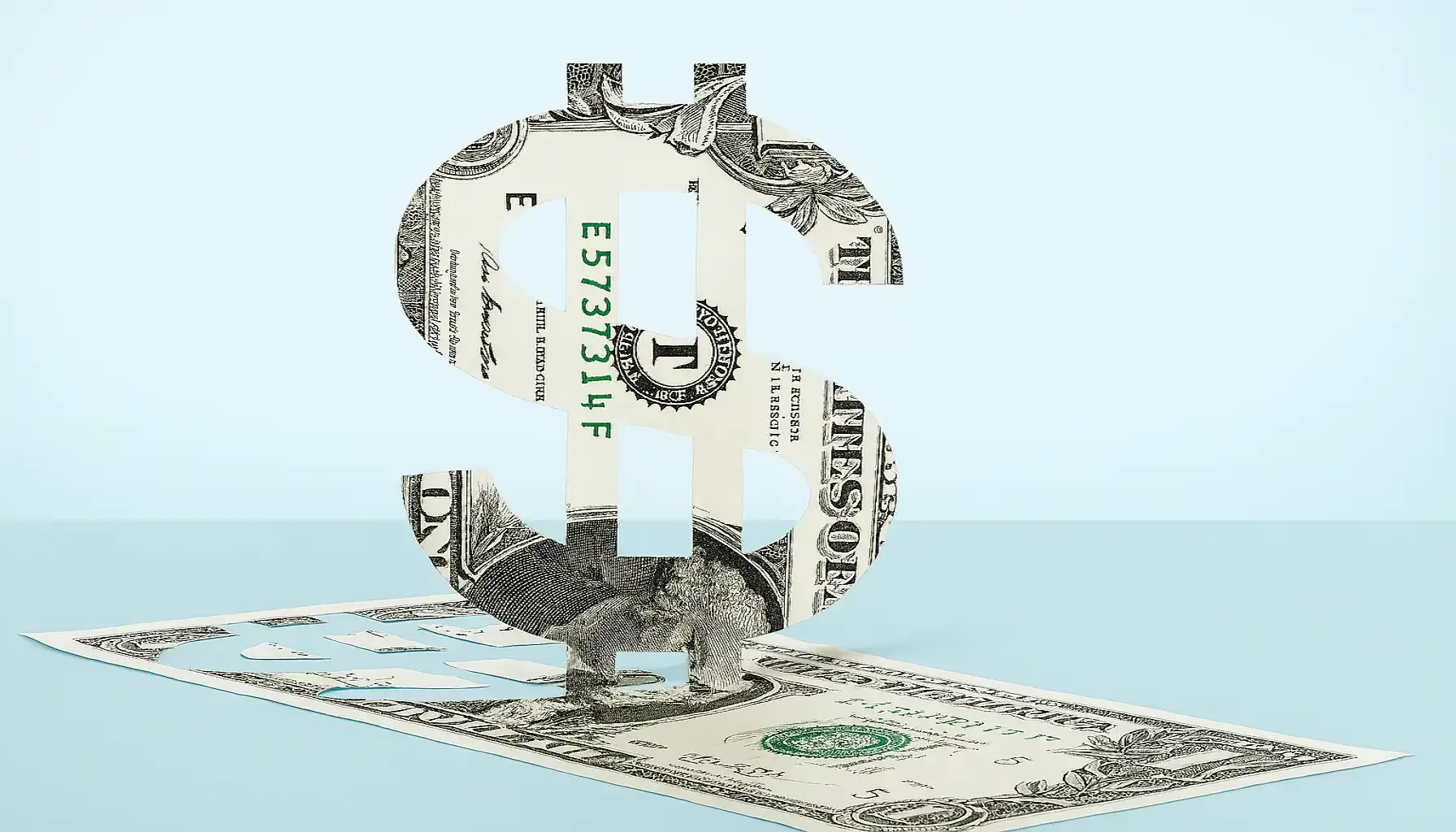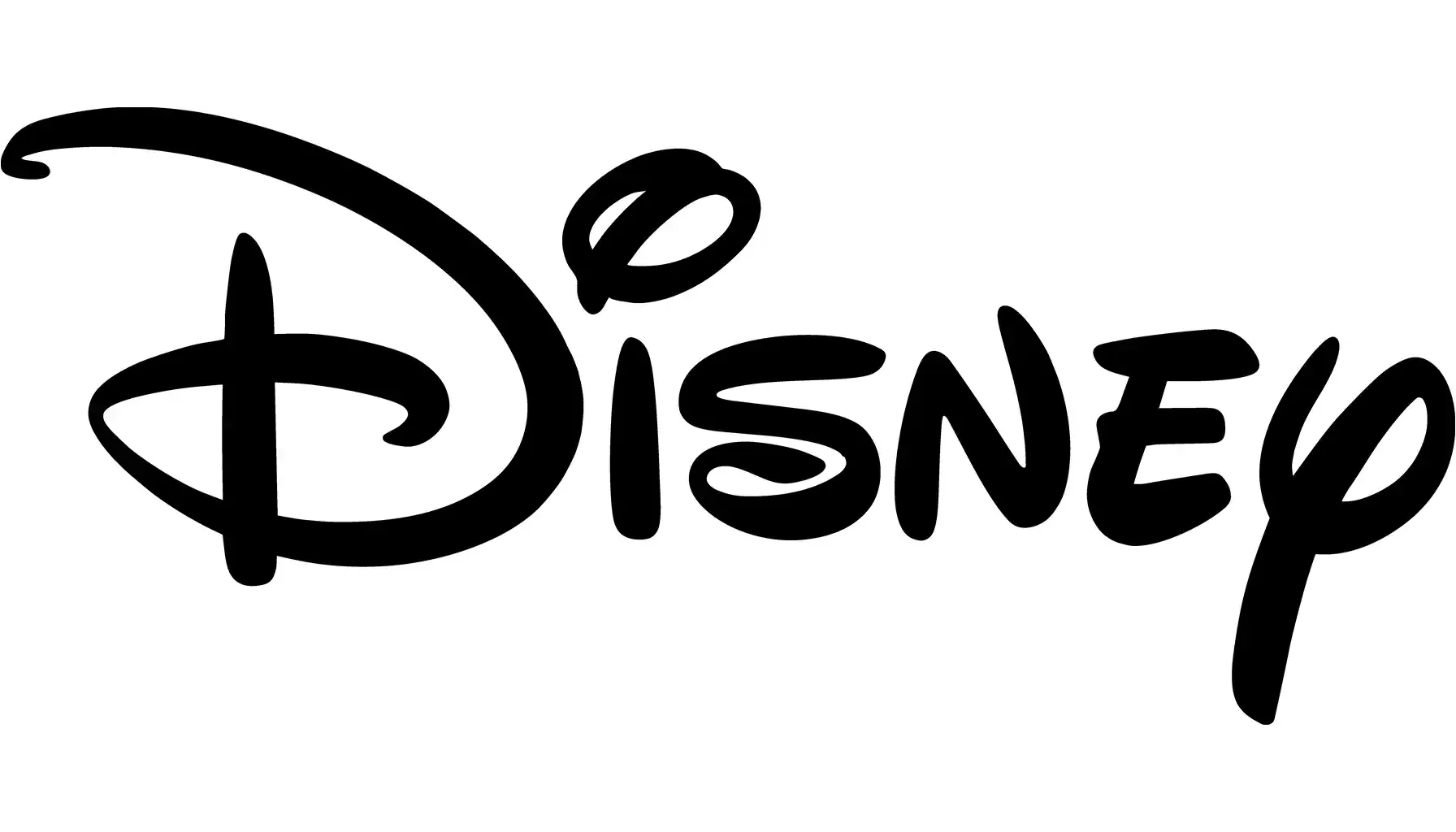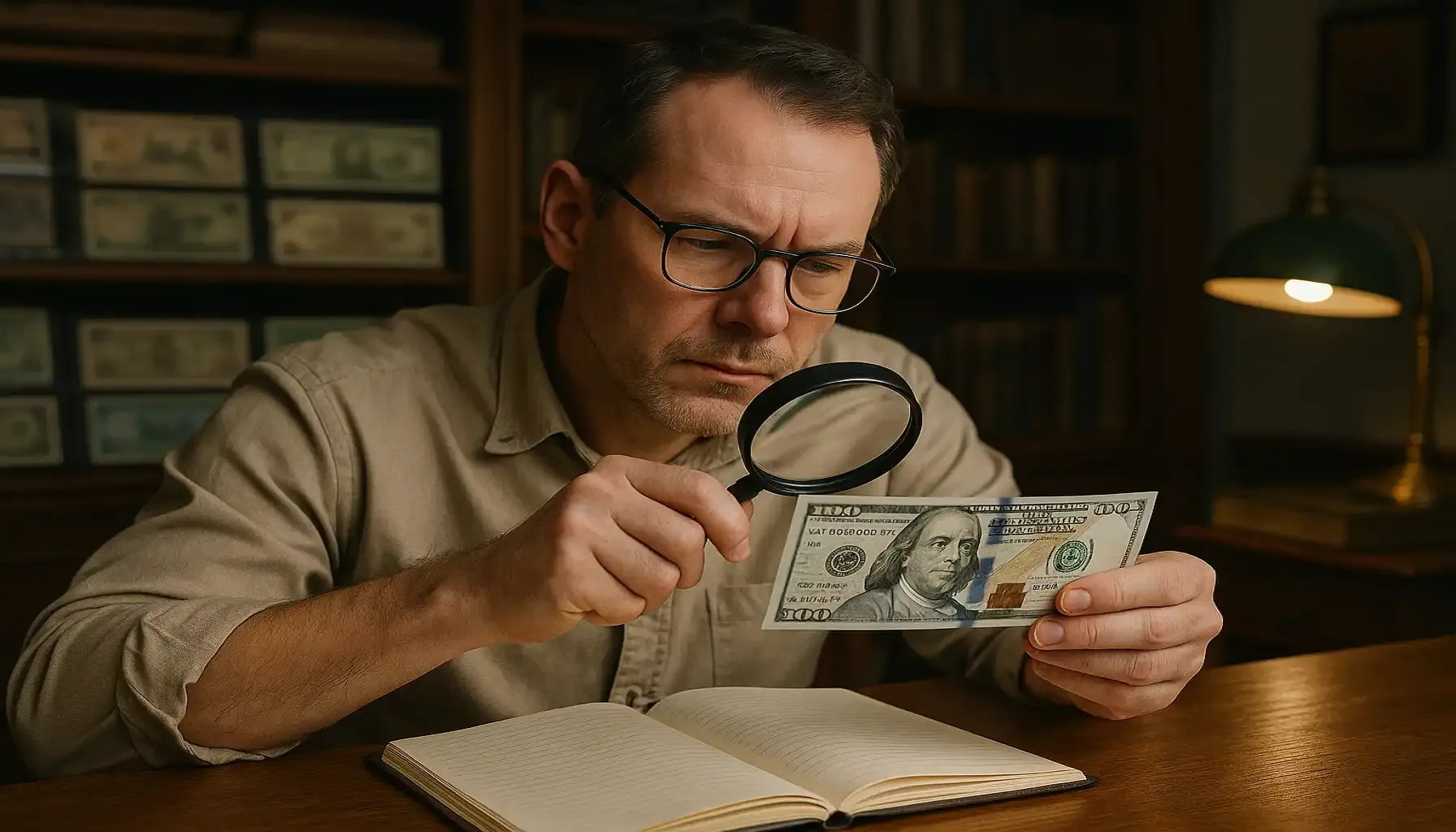Contents:
Is a 1939 nickel worth anything? The answer will depend on its age, the stories it carries, its varieties, mint marks and rare errors. If you have one in your collection, you should definitely understand its true worth. But it requires a closer look. We will provide you with it today in this article.
Here is a short description of this piece so that you can identify coins fast and easy with your own eyes:
Feature | Description |
Obverse Design | Portrait of Thomas Jefferson |
Reverse Design | Monticello (Jefferson's home) |
Designer | Felix Schlag |
Composition | 75% Copper, 25% Nickel |
Weight | 5 grams |
Diameter | 21.21 mm |
Edge | Plain |
Mint Marks | D (Denver), S (San Francisco), None (Philadelphia) |
The History Behind the 1939 Nickel
The 1939 Jefferson nickel represents a transitional period in U.S. coinage. This was only the second year of production after the Buffalo nickel was retired in 1938. The introduction of the Jefferson design honored the third President of the United States, with Felix Schlag winning the design competition. Interestingly, Schlag's original design of Monticello was modified, as the Treasury preferred a more straightforward architectural depiction.
The Jefferson coin replaced the rugged imagery of the Buffalo nickel, but remnants of the past lingered. Some collectors even refer to 1939 Buffalo nickel value, though technically, no Buffalo nickels were minted in 1939, as well as after WWII (check it out in the article about the 1946 nickel value). Such references often stem from confusion around older collections.
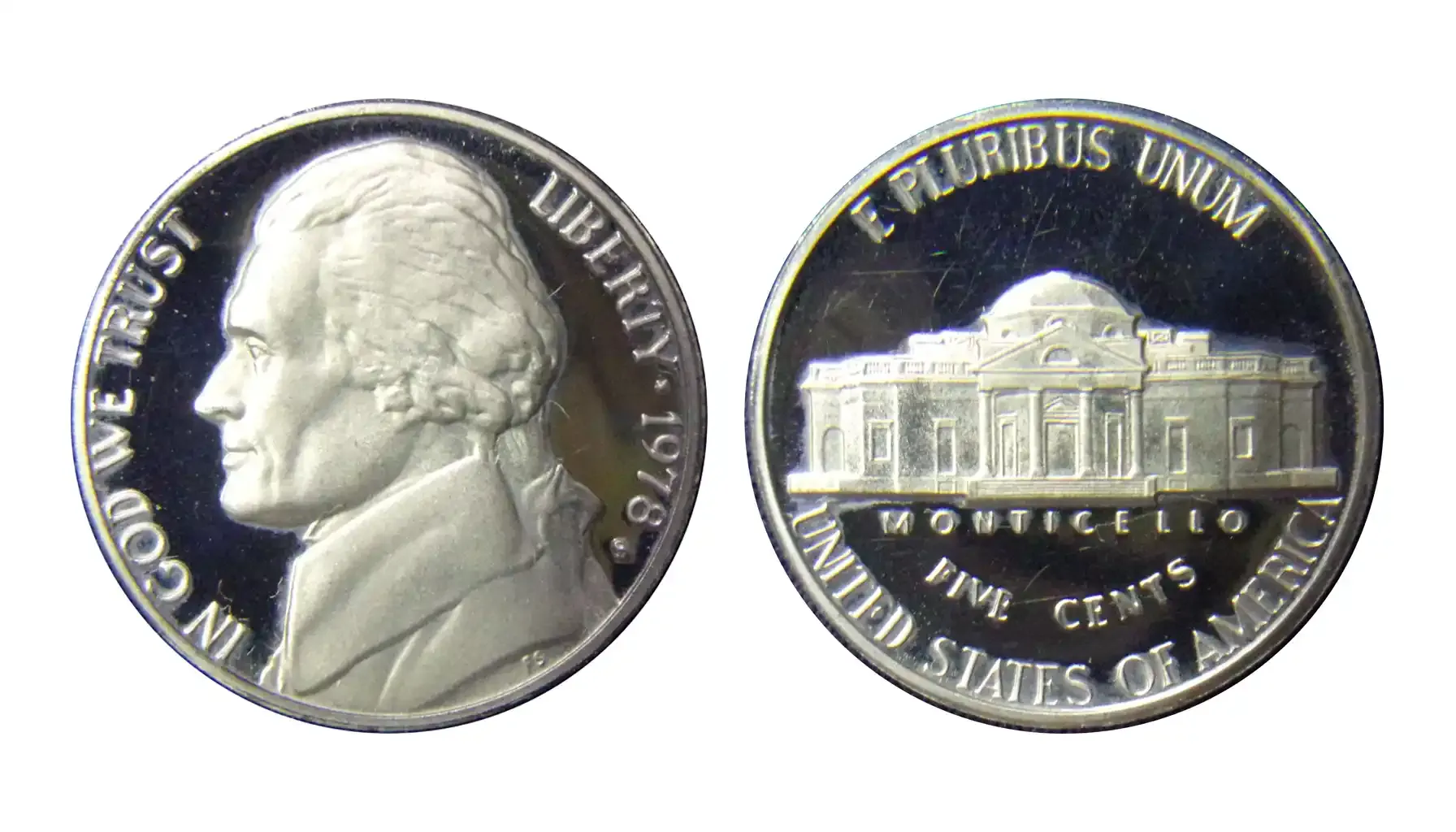
Design and Composition
The obverse shows Jefferson’s left-facing profile, framed by the motto "IN GOD WE TRUST" and "LIBERTY" and the date "1939." The reverse features Monticello, Jefferson’s Virginia estate, with "E PLURIBUS UNUM" arching above and "UNITED STATES OF AMERICA" below and "FIVE CENTS."
A key detail for collectors is identifying where is the mint mark on a 1939 nickel is located. Look to the right of Monticello’s steps on the reverse. Absence of a mark indicates it was minted in Philadelphia, while "D" and "S" signify Denver and San Francisco mints, respectively. It was the 1939 nickel mint mark location, but what about its prices?
1939 Nickel Value Today
How much is a 1939 nickel worth today? That depends on factors like mint mark, condition and errors. Here is an average price guide:
Coin Variety | EF/XF 45 | MS 60 | MS 65 | MS 67+ | Proof PR 68 |
1939 (P) No Mint Mark | $1 | $5 | $30 | $550 | $5,500 |
1939 (P) No Mint Mark Full Steps | - | $10 | $65 | $975 | - |
1939 D Jefferson Nickel | $16 | $40 | $100 | $750 | - |
1939 D Full Steps | - | $35 | $275 | $3,100 | - |
1939 S Jefferson Nickel | $6 | $16 | $125 | $850 | - |
1939 S Full Steps | - | $24 | $265 | $2,800 | - |
Disclaimer: Values fluctuate based on market demand and grading precision.
Mint Marks
1939 Nickel Value No Mint Mark (Philadelphia)
Regular strike coins from Philadelphia are common, but those with full steps command high premiums. The 1939 nickel no mint mark value can reach up to $5,000 in pristine condition. Proof versions are even more valuable.
1939 D Nickel Value (Denver)
Denver's mintage was notably lower. That is why these coins are more valuable. A full steps version significantly increases worth, with high-grade specimens selling for over $3,000. Notably, the Denver mint produced coins with sharp details, especially visible in Monticello's steps.
1939 S Nickel Value (San Francisco)
San Francisco coins also carry strong collector interest, especially in MS 67+ conditions. Full steps variations from this mint can reach values upwards of $2,800. The "S" mint mark often features slight variances in size and placement.
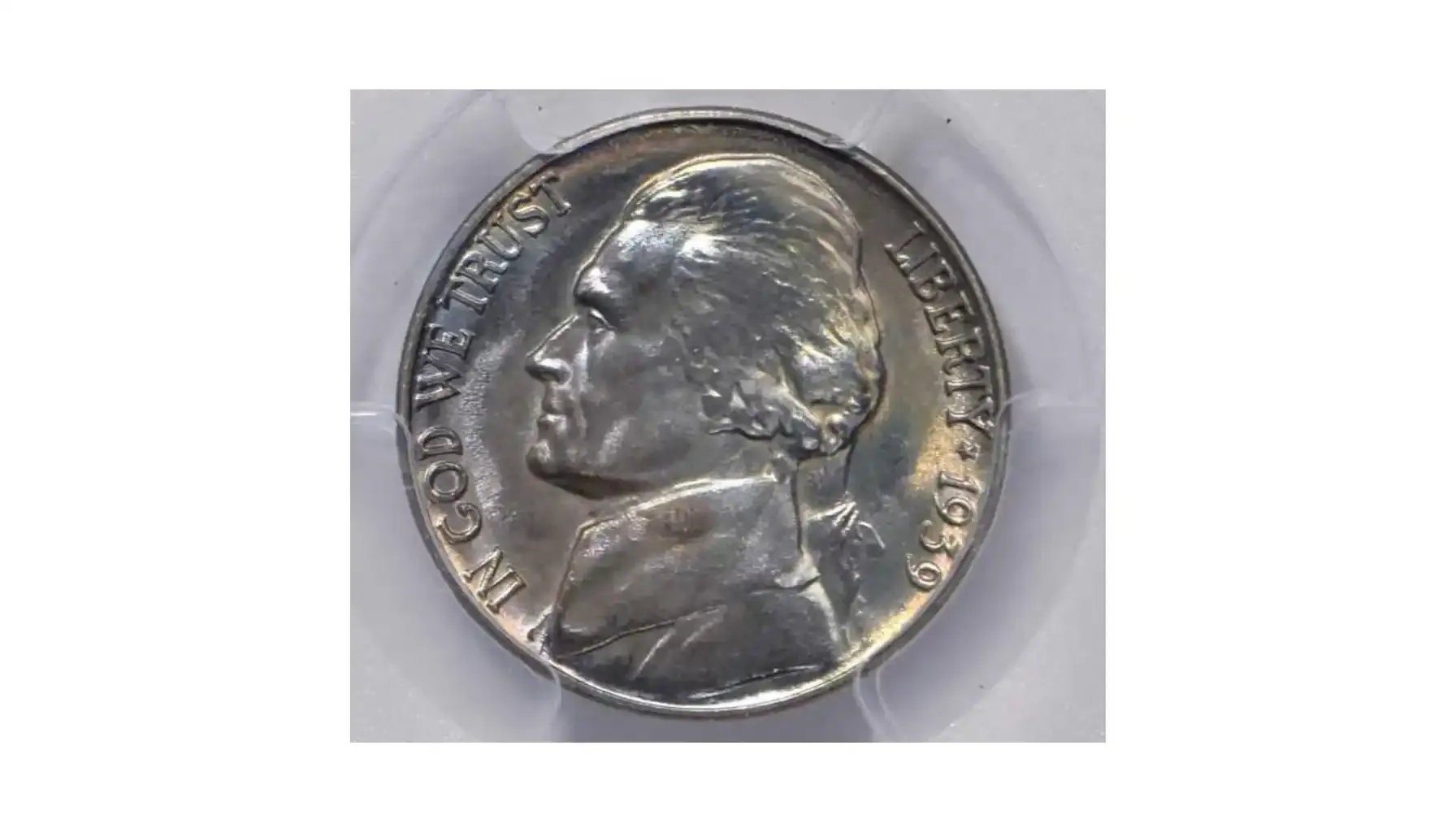
Rare Errors That Elevate Value
The 1939 nickel error list includes double dies, off-center strikes and repunched mint marks. Particularly rare errors, like the rare 1939 nickel error with quadrupled die obverse (QDR), can cost thousands.
These errors often result from minting mistakes during production, and depending on their rarity and condition, they can significantly increase the coin's value.
1. 1939 Nickel Doubled Monticello (DDR - Doubled Die Reverse)
One of the most wanted errors is the 1939 nickel doubled Monticello. This error occurs when the reverse die receives an additional, slightly misaligned impression from the hub. The doubling is particularly visible on the inscriptions “MONTICELLO” and “FIVE CENTS.”
Key Identifiers: Strong, clear doubling on the letters, especially in “MONTICELLO.”
Value Potential: Values can range from a few hundred dollars to over $5,000 for coins in Mint State with Full Steps.
2. 1939 Henning Nickel (Counterfeit Error)
The infamous 1939 Henning nickel is a counterfeit created by Francis Henning in the 1950s. Henning’s counterfeit nickels are distinguishable because they lack a mint mark, even when they should have one (like for 1944 nickels, which were supposed to have large mint marks above Monticello due to the wartime composition change).
Key Identifiers: Missing mint mark where there should be one, incorrect weight (slightly heavier) and weak details due to inferior die quality.
Value Potential: Ironically, despite being counterfeit, Henning nickels are collectible and can sell for $50 to $500.
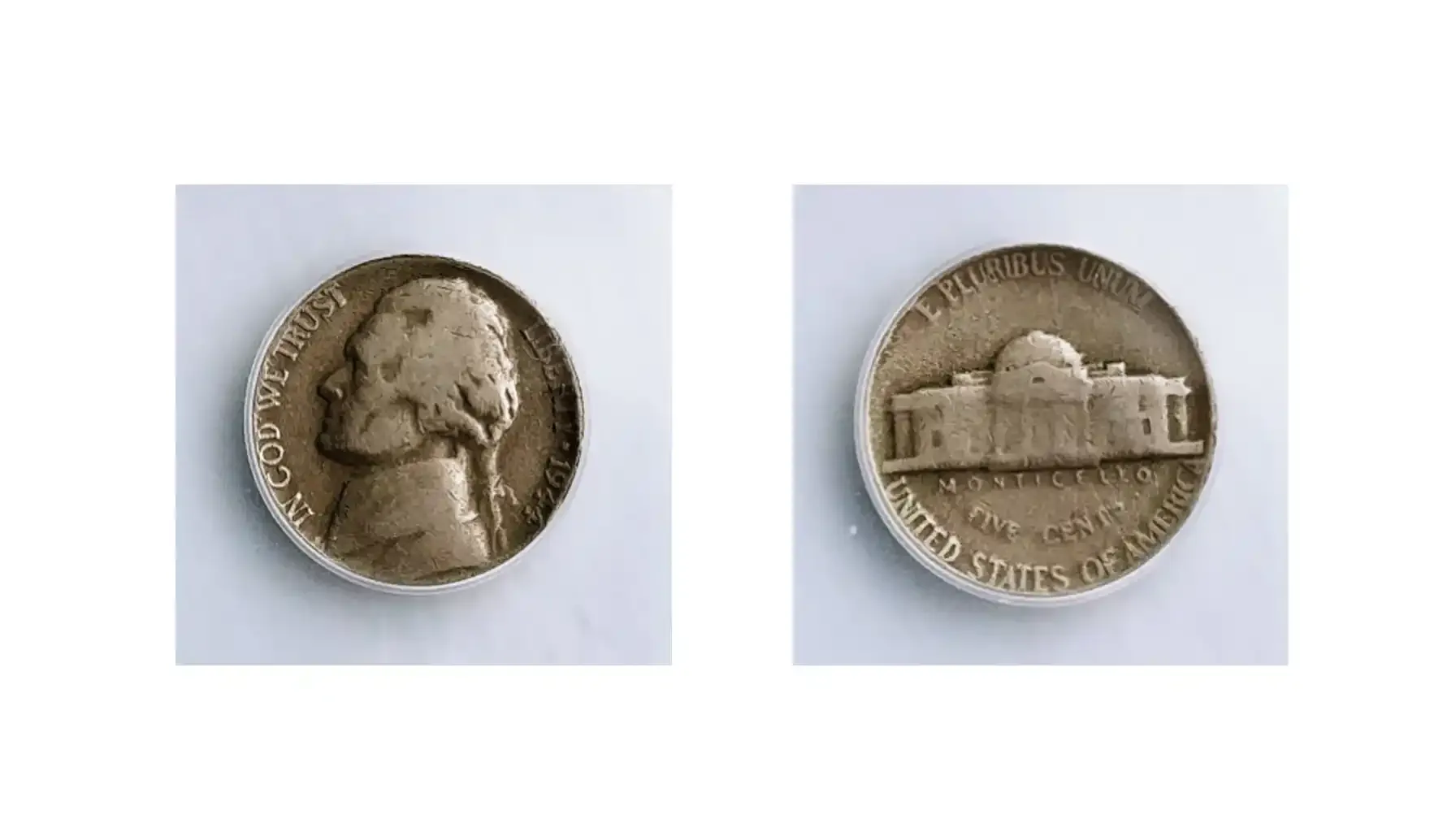
3. 1939 Nickel Quadrupled Die Obverse (QDR - FS-802)
The 1939 nickel quadrupled die obverse is a rare error where the die used to strike the coin was impressed four times. This, in turn, causes a quadrupling effect. This is most noticeable on the date “1939” and the letters in “LIBERTY.”
Key Identifiers: Quadrupling effect around the date, especially the digits “3” and “9,” and sometimes on Jefferson’s eye or the word “LIBERTY.”
Value Potential: High-grade examples with strong quadrupling can reach over $3,000, with moderate-condition coins still fetching several hundred dollars.
Related article: 1961 Nickel Guide.
4. 1939 Off-Center Strike Errors
Off-center strike errors occur when the coin blank is improperly aligned during striking, causing part of the design to be missing. The degree of off-centering affects the value, with 50% off-center strikes (while still showing the date) being the most desirable.
Key Identifiers: Part of the coin’s design is missing, with a blank crescent-shaped area visible.
Value Potential: Depending on the percentage of off-center strike and whether the date is visible, values range from $100 to over $1,000.
5. 1939 Repunched Mint Mark (RPM)
A repunched mint mark occurs when the mint mark was punched more than once in different positions. This is especially notable in some 1939-D (look for the 1939 D Jefferson nickel value in this case) and 1939-S nickels.
Key Identifiers: Look for signs of doubling or shadow-like impressions around the mint mark “D” or “S.”
Value Potential: While not as valuable as doubled dies, RPM errors can still bring in $50 to $300. This depends on the clarity of the error and the coin’s condition.
6. 1939 Die Cracks and Cuds
As dies wear out, they can develop cracks, which transfer to the coins as raised lines. When part of the die breaks off completely, it creates a cud—a blob-like area where the design is missing.
Key Identifiers: Raised lines or blobs of metal, usually near the edges or along the rim.
Value Potential: Die cracks are generally less valuable, but large cuds can sell for $100 to $500.
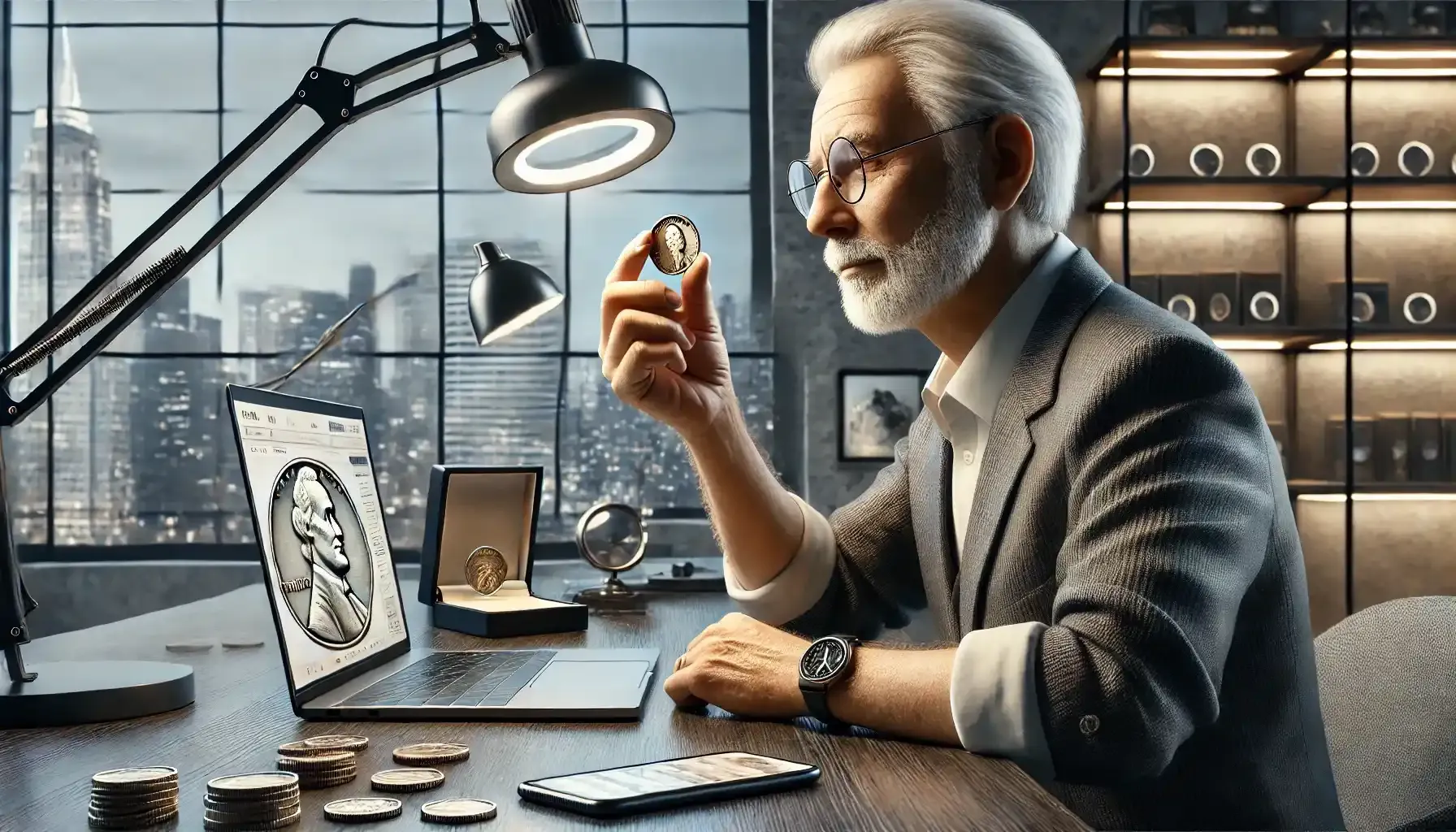
The world of 1939 nickels is richer than one might expect. Wondering about the true price of your coin, e.g., the value of a 1939 nickel no mint mark? The Coin ID Scanner app can instantly identify and appraise your piece to understand its hidden potential.
Frequently Asked Questions (FAQs)
Is the 1939 nickel rare?
t is not extremely rare, especially if we are talking about the 1939 P nickel value, certain varieties like full steps versions or specific mint errors can be considered scarce and highly valuable among collectors.
How can I tell if my 1939 nickel has a valuable error?
Look for doubling on Monticello or the date, off-center strikes or unusual mint marks. Magnification tools or the Coin ID Scanner app can help identify these details.
What’s the difference between a proof 1939 nickel and a regular one?
Proof ones are specially made for collectors with a mirror-like finish and sharper details. They were not meant for circulation and usually lack wear.

